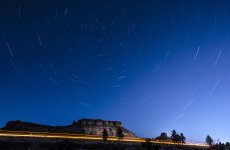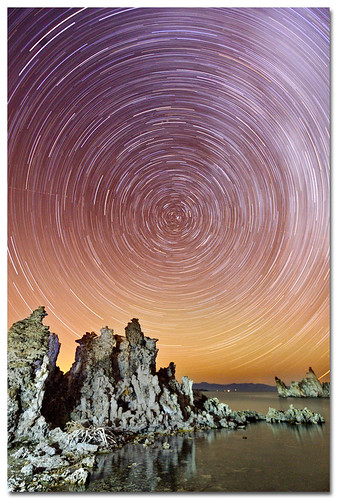For star trails, a smaller aperture of f/11 - f/5.8 works great. Why? For star trails, the exposure is anywhere from 20 minutes to over an hour. This allows the camera to absorb the light for a long time which allows the picture to look nice and bright for a night time photo. But this won't work for other pictures that are only 30 seconds or so. You can't cram 20 minutes worth of light into 30 seconds without changing ether your ISO or aperture. Increasing your ISO introduces more noise which is not desirable at all. Therefor we make the aperture as wide open as possible; f/1.4-f/2.8. Even f/3.5 is acceptable but is pushing the limit as to what is acceptable.
Yes, technically an aperture of f/11 will be sharper, but the sharpness is not noticeable in night shots. If someone tells you they can notice it, they are lying. The only three things that can affect night time sharpness are bad focusing, vibrations, or hazy/foggy/cloudy skies. Having an aperture open up to f/1.4 only helps you. It allows you to have a lower ISO (less noise) and a lower exposure time (allows you to take more shots for the same amount of time you would have been out there).
Hopefully this clears some things up!
-Wahugg
Edit: Here is an example that might help you understand the correlation of Aperture, ISO, and Time exposure.
Let’s say we have an 11 inch water pipe(aperture). It can move 30,000 gallons of water over 1 hour(exposure time)at 50PSI(ISO). All of a sudden the demand for water raised and now you have to move 30,000 gallons of water within 30 minutes. To do this you increased the PSI to 100. Well the pipe couldn’t handle that pressure so it blew up.
That scenario relates to trying to take a 30 second exposure with the same f/11 aperture. In order to get a picture at all, you would have to raise the ISO (PSI) to a level that would give too much noise (the blown pipe). If the pipe had been bigger, such as 22in, it might have been able to handle the extra pressure. Same thing with our apertures. If we make the aperture bigger, the picture will look better and have less noise.



